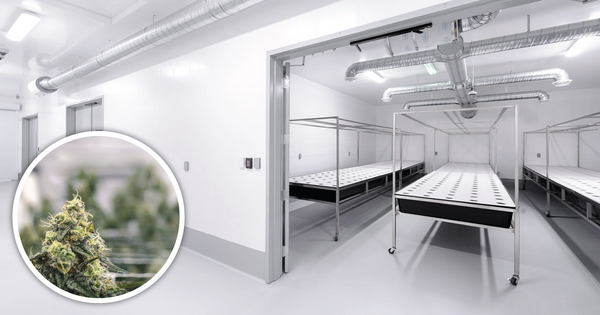If you're gearing up for a construction project, whether it's a home renovation, a new addition, or a complete build from scratch, you're going to need to plan your budget. In this blog post, we're diving into the nuts and bolts of budget planning for your construction project. From defining your project's scope and researching costs to creating a detailed budget and selecting the right contractor, we've got you covered.
Step 1: Outline Your Project Scope and Objectives
Before you dive into the nitty-gritty of dollars and cents, let's lay the foundation. The first step in budget planning is defining the scope and objectives of your project. Think of it as crafting a roadmap before embarking on a journey:
- Defining Scope. Begin by defining the scope of your project. What exactly do you want to achieve? Whether you're planning to remodel your kitchen, finish your basement, or you’re building a whole new garage, outline the full extent of the renovation or remodel.
- Specific Objectives. Get specific about your goals. Are you aiming for a modern aesthetic, energy efficiency, or an extension of living space? The more precise your objectives, the easier it is to budget effectively. Creating a list of ‘must-have’, ‘nice to have’ and ‘won’t have’ elements is a good way to organize your plans.
- Materials and Features. Consider the materials and features you want for your project. Will it be hardwood floors, granite countertops, or custom cabinetry? Listing these details ensures you don't overlook essential components.
- Timeline. Outline a rough timeline. When do you want the project to start, and when should it ideally conclude? Having time-related goals aids in cost estimation and project planning.
Step 2: Research How Much Everything Will Cost
Now, let's get down to brass tacks. Research is your trusty compass on this journey. Start by gathering estimates for all the elements that will make up your project. Here are four factors to account for:
- Materials. Create a detailed list of all the materials you'll need. Visit suppliers or browse online to gather pricing information for items like lumber, fixtures, appliances, and finishes.
- Labor. Reach out to potential contractors or tradespeople. Request detailed quotes for labor costs, considering factors like hours of work, skill level required, and any specialized expertise.
- Permits and Regulations. Investigate local permitting requirements and related costs. Different areas may have varying rules and fees, so it's important to be aware of these early on.
- Other Expenses. Don't overlook miscellaneous costs. Include items such as equipment rental, insurance, utility connection fees, and waste disposal costs. These small expenses can add up quickly.
Step 3: Create a Detailed Budget
With your research in hand, it's time to draft your budget. Your budget is the backbone of your project, ensuring that your financial resources align with your vision. Let's delve into creating a comprehensive budget:
- Categories. Divide your budget into clear categories, including materials, labor, permits, equipment rental, and contingency funds.
- Itemized Costs. For each category, itemize the costs. Break down material expenses by type and quantity, specify labor costs for different phases of the project, and include permit and fee breakdowns.
- Quotes and Invoices. Keep all contractor quotes and invoices well organized within your budget. This documentation helps you stay on top of spending and identify discrepancies.
- Contingency Fund. Allocate a portion of your budget, typically around 10-15%, for unforeseen expenses. This reserve ensures that unexpected issues won't derail your entire project.
Find a Retailer
Trusscore works with thousands of retailers across North America to bring you the best service and access to our products.
Step 4: Prioritize Your Costs
Now that you have a budget in place, it's time to prioritize your costs. Think of this step as setting your project's priorities straight by putting elements in specific buckets:
- Essential Elements: Identify project elements that are non-negotiable. These are the core components that must be completed to achieve your project's objectives.
- Flexibility: Recognize areas where you can be flexible. Perhaps you can adjust the choice of materials, finishes, or features to accommodate budget constraints without compromising quality.
- Trade-offs: Be prepared to make trade-offs if necessary. Balancing your budget while aligning with your goals may require creative solutions or phased project execution.
Step 5: Select the Right Contractor
Choosing the right contractor is a pivotal moment in your project. Here are some tips to help you make an informed decision:
- Ask for References. Request and thoroughly check references from potential contractors. Speak with previous clients to gauge satisfaction and get insights into the contractor's work quality.
- Multiple Quotes. Obtain quotes from multiple contractors. This not only helps in comparing pricing but also ensures you find a contractor whose services align with your budget and expectations.
- Budget Alignment. Select a contractor who can demonstrate their ability to work within your specified budget while delivering the desired quality of work.
Looking for more tips to ensure you hire the right contractor for the job? Be sure to ask these 25 questions during your search.
Step 6: Determine Your Project Timeline
- Time is money, as the saying goes, and your project timeline can impact your budget significantly. To keep things on track, do the following:
- Scheduling. Collaborate closely with your contractor to establish a realistic project timeline. Ensure it aligns with your budget, as delays can lead to additional costs.
- Change Assessments. When changes to the project plan arise, promptly assess their impact on both the timeline and the budget. Make informed decisions to keep your project on track.
Step 7: Track and Monitor Your Ongoing Project
Once your project is in motion, don't let your budget gather dust. Keeping a watchful eye on your budget throughout the project is essential for financial success:
- Budgeting Tools. Consider using budgeting software or spreadsheets to track expenses. These tools allow you to record costs as they occur, providing a real-time overview of your financial situation.
- Regular Reviews. Schedule regular budget reviews. Compare actual spending against your planned budget to identify any discrepancies. Adjust your spending accordingly if you veer off course.
- Communication. Maintain open communication with your contractor and subcontractors regarding budgetary concerns. Regularly review your spending to identify any deviations from the plan and adjust as needed. Address any cost overruns promptly to avoid surprises.
With a well-planned budget, you can embark on your construction journey with confidence, knowing that you're equipped to handle whatever comes your way. Remember to define your project scope, gather accurate cost estimates, create a detailed budget, and keep a watchful eye on your finances throughout the process. By following these steps and making informed decisions, you'll turn your construction dreams into reality while keeping your budget firmly intact. Happy building!






